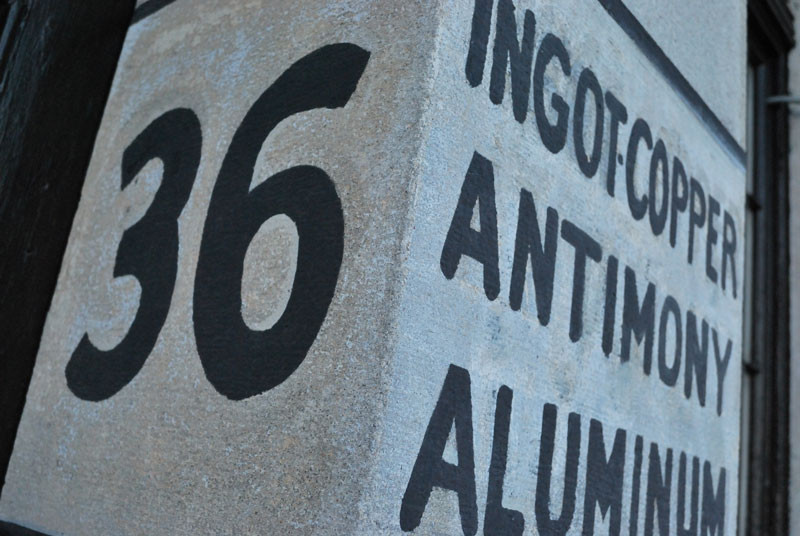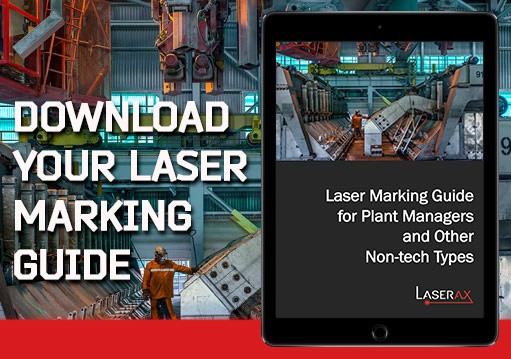Automotive Part Marking Technologies - Which One to Choose?
If you are struggling to find a marking method for traceability, or simply for process improvement, you are not the only one.

Pure aluminum is seldom used in common industrial applications. It is usually alloyed with other metals. The choice of additives depends on the ultimate intended use of the product. In ESAB knowledge center we have come across a very interesting text titled: “How and Why Alloying Elements Are Added to Aluminum”. ESAB highlights various denominations of alloyed aluminum that can be used in order to achieve the best results according to your manufacturing goal.
Let’s review the alloy series, their characteristics, and problems encountered when welding these alloys. With more precise composition information for the alloys you are using you can achieve the best results. This is one reason that companies today are looking for traceability in their production materials. They can be sure they have the exact materials they're are looking for. Thus fabricating the best products with the appropriate materials that meet your manufacturing goals.
Aluminum alloys are grouped into series according to their material composition. Below is a description of the 7 series, their different compositions and features.
1000 series
This is the purest form of aluminum, it contains 99.00% aluminum or more. Pure aluminum is fairly lightweight and pliable as compared to other metals.
2000 series
Aluminum of this series is alloyed with copper. It can contain between 2 and 10% copper. Copper is added to aluminum to make it harder, less ductile and will reduce resistance to corrosion. Welding aluminum from this series is very challenging, because of its tendency to crack.
3000 series
The 3000 series is aluminum with manganese added. The main benefit of which is to improve strength and strain hardening. It retains its strength at high temperature and does not affect the resistance to corrosion of pure aluminum.
4000 series
Adding silicon to aluminum reduces its melting point and increases ductility. It is non-heat treatable, except when magnesium is added, which then converts it into a series 6000 alloy. These characteristics make it the perfect alloy for die-casting.
5000 series
When adding magnesium to aluminum, its strength is considerably increased. It is also hardened when submitted to strain. This makes it more ideally suited for sheets and plates.
6000 series
The 6000 series includes both magnesium and silicon. It has improved ductility and is heat-treatable. These characteristics make it ideal for aluminum extrusions.
7000 series
Aluminum and Zinc is the basis for this series. When adding different quantities of zinc, magnesium and/or copper to the aluminum, the result is an aluminum alloy that has improved strength. This alloy is not usually fusion welded.
Other Alloying Elements
There are other elements which combined with aluminum produce sought after characteristics. For example, iron is sometimes added to series 1000 aluminum to make it slightly stronger. Nickel is often added to 2000 and 6000 series aluminum to make it stronger and improve its strength at high temperature. Chromium is used in aluminum magnesium alloy to prevent recrystallization and in other alloys to reduce its tendency to crack when welded. Titanium is found in weld filler as a way to improve weld structure. Lithium will increase the strength of aluminum, reduce ageing and decrease density. Lead and bismuth are used to improve machinability.
Conclusion
All these alloys are nearly impossible to identify with the naked eye. Anyone wishing to make a high-quality weld will have to know the nature of the alloy(s) being welded. As a matter of course, decisions for determining the nature of the filler material taken on inadequate information will most likely not improve the quality of the weld. Therefore, it is often essential to know the exact composition of the materials you are working with. This is why traceability is an important market requirement for many manufacturers. Laserax produces laser marking solutions that provide means to ensure traceability of aluminum from cast house to end users. Visit our other blog posts or ask one of our experts for more information on aluminum traceability.

Sources:
ESAB, “How and why alloying elements are added to aluminum”, ESAB Knowledge Center. (2014, March 26). Retrieved June 28, 2017, from https://www.esabna.com/us/en/education/blog/how-and-why-alloying-elements-are-added-to-aluminum.cfm

The title picture, Ingot-Copper Antimony Aluminum, is licensed under a Creative Commons Attribution-NonCommercial-NoDerivs 2.0 Generic License by Tom Milewski.